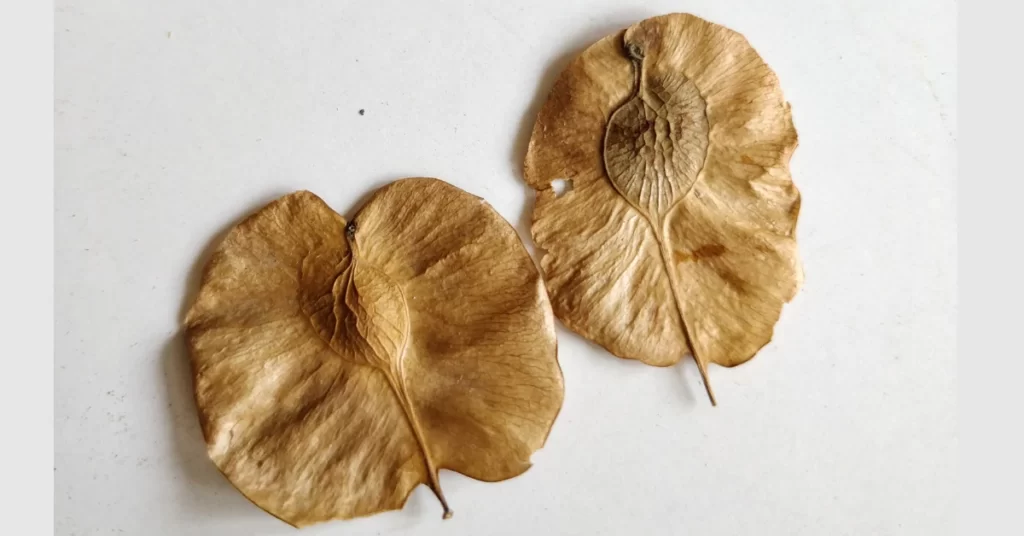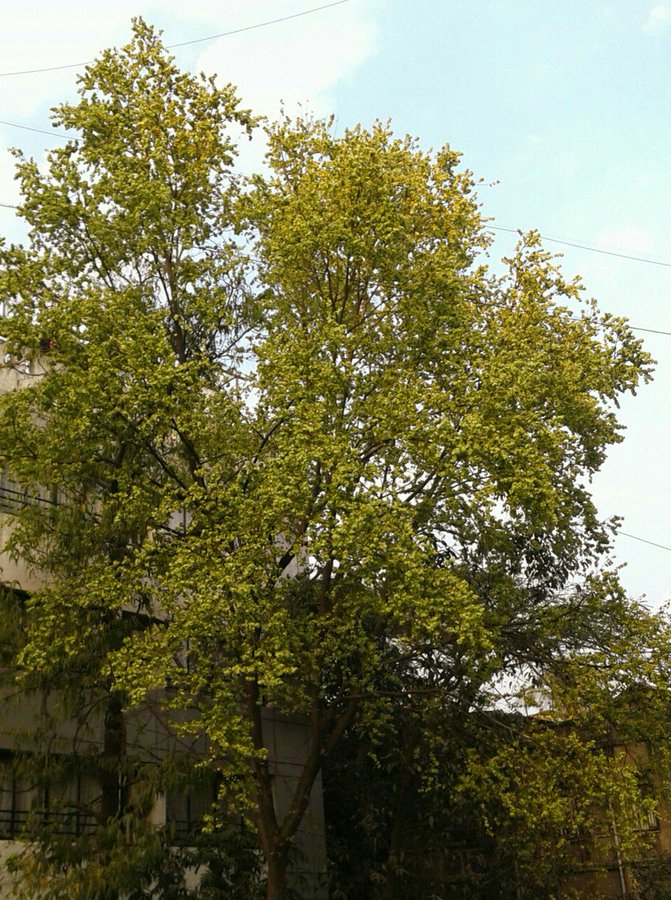Holoptelea Integrifolia, also known as Indian elm or shirish tree, is a versatile large deciduous tree that can grow up to 100 feet tall in the right conditions. This attractive tree is native to the Indian subcontinent and is valued for its ornamental qualities as well as its medicinal uses.
Holoptelea Integrifolia – Key Facts
| Name | Holoptelea Integrifolia |
| Common Names | Aavel, Aavil, Avelkurunnu, Njettaval, Njetavil, Indian elm, Jungle cork tree, Kanju |
| Origin | Indian subcontinent, Indo-China and Myanmar |
| Type | Deciduous Tree |
| Indoor/Outdoor | Outdoor |
| Soil | Well Drained |
| Watering | Medium |
| Temperature | 23° C to 25° C |
| Sunlight | Full Sunlight to Partial Shade |
| Flower | Greenish-Yellow to Brownish |
| Blooming Season | February-March |
| Height | 10 – 15 feet |
With its spreading canopy of lush green leaves and clusters of fragrant pink flowers in spring, Holoptelea Integrifolia makes an excellent choice for landscaping purposes. This article provides a comprehensive guide on how to successfully grow and care for Holoptelea Integrifolia, covering important topics like propagation, optimal growing conditions, and utilizing it in garden designs.
Overview of Holoptelea Integrifolia

Holoptelea Integrifolia is a fast-growing deciduous tree that typically reaches 50-80 feet in height, with some specimens growing up to 100 feet tall with spreading canopies that can span 40-50 feet wide. The tree has a short trunk that branches low to the ground and reddish-brown, flaky bark. The lustrous green leaves are oval in shape with smooth edges. They can grow up to 8 inches long.
One of the most ornamental features of Holoptelea Integrifolia are the sweetly fragrant pink flowers that bloom in dense clusters during spring. The flowers are about 1 inch wide with five petals, resembling orchids in appearance. These give way to papery seed pods that ripen in fall and persist through winter. The seed pods are twisted and curled into interesting corkscrew shapes.
Native Region and Habitat
Holoptelea Integrifolia is native to the Indian subcontinent, where its natural range includes India, Pakistan, Nepal, Sri Lanka, and Myanmar. It grows in various habitats in these regions, occurring in both wet and dry forests, plains, hills, and mountain slopes up to 4,900 feet in elevation. The tree thrives in subtropical and tropical climates.
Features and Uses
Holoptelea Integrifolia is grown for its ornamental qualities and utility. In landscaping, it makes an excellent shade tree or privacy screen. The lush green foliage provides dense shade, and the vibrant pink blooms add spectacular spring color. The tree also has good pollution tolerance.
The wood is used for making furniture, agricultural tools, and construction materials. Holoptelea Integrifolia has important applications in traditional Ayurvedic medicine in India. Extracts from the leaves and bark are used to treat rheumatism, inflammation, diabetes, and bacterial infections.
Common names for the Holoptelea Integrifolia in different Indian languages include:
Hindi: चिलबिल (Chilbil), चील्बिल (Cheelbil), जल (Jal)
Bengali: নঙ্গল (Nangal)
Telugu: పనిస (Panisa), వనిస (Vanisa)
Marathi: चिलबिल (Chilbil), अरांबा (Aramba)
Tamil: ஆரண்பு (Arampu)
Urdu: جل (Jal), چلبل (Chilbil)
Growing Conditions

Holoptelea Integrifolia is adaptable to various climates and soils, but prefers warm temperatures and moist, well-drained sites. Providing optimal growing conditions enhances the tree’s health and growth.
Sunlight Requirements
- Thrives in full sun to partial shade.
- In hot climates, afternoon shade is beneficial.
- Needs at least 6 hours of direct sun daily for best growth.
Soil Needs
- Tolerates a wide variety of soils, including alkaline and acidic types.
- Grows best in moist, fertile, well-draining loamy soil.
- Avoid overly sandy or boggy, waterlogged sites.
Watering Needs
- Requires regular irrigation especially when young.
- Prefers consistent moisture in the soil.
- Water deeply once or twice per week in summer.
- Reduce frequency in winter.
Temperature and Humidity
- Prefers warm, subtropical climates with temperatures between 68-86°F.
- Tolerates short spells of freezing temps once established.
- Maintain moderate humidity levels around the plant.
- Avoid drastic shifts in temperature.
Propagation from Seeds

Growing Holoptelea Integrifolia from seeds is a simple and rewarding way to cultivate new plants. Follow these tips for the best results:
Harvesting and Storing Seeds
- Collect seed pods when they turn brown and papery in fall.
- Spread pods in a single layer to dry for 1-2 weeks.
- Extract seeds and discard chaff. Store seeds in an airtight container in the refrigerator.
Planting Seeds
- Stratify seeds by chilling for 8 weeks.
- Sow seeds indoors 8-10 weeks before last frost.
- Use a well-draining soilless media. Maintain 70°F temperature.
- Plant seeds 1⁄4 inches deep. Keep moist but not saturated.
Caring for Seedlings
- Germination occurs in 15-60 days.
- Transfer seedlings when 2 sets of true leaves emerge.
- Grow on at 65-75°F with bright light and even moisture.
- Harden off and transplant outdoors after all danger of frost.
Propagation from Cuttings

Holoptelea Integrifolia can also be propagated from semi-hardwood cuttings:
Selecting and Preparing Cuttings
- Take 6-8 inch cuttings from healthy stems in late summer.
- Cut just below a node with clean pruning shears.
- Remove leaves from lower half of each cutting.
Rooting Cuttings
- Dip cuttings in rooting hormone powder/gel.
- Insert in moist potting mix like perlite and peat.
- Maintain warm temperature around 75°F.
- Keep consistently moist, not soggy.
Transplanting Rooted Cuttings
- Cuttings root in 6-10 weeks. Check for roots.
- Transplant into containers with regular potting mix.
- Grow on indoors over winter.
- Acclimate and transplant outdoors after frosts.
Caring for Holoptelea Integrifolia Plants

Caring for established Holoptelea Integrifolia involves pruning, fertilizing, and monitoring for pests or diseases.
Pruning
- Prune in late winter to control size/shape and remove deadwood.
- Make thinning cuts just above lateral buds or branches.
- Retain the tree’s natural form with minimal pruning.
Fertilizing
- Apply balanced 10-10-10 fertilizer or organic compost in spring.
- Additional light fertilization in summer is beneficial.
- Avoid over-fertilization which causes fast, weak growth.
Pest and Disease Control
- Monitor for aphids, leaf miners, caterpillars, and borers.
- Treat with horticultural oils or neem oil sprays.
- Promote air circulation and avoid overwatering.
- Remove and destroy heavily infected plant material.
Uses in the Landscape

With its ornamental qualities and hardy nature, Holoptelea Integrifolia serves multiple uses in gardens and landscapes:
Specimen Planting
- Striking focal point or accent plant when standing alone.
- Showcase the tree’s ornamental foliage, flowers, and bark.
Shade Tree
- Provides heavy shade for yards, parks, roadsides, etc.
- Plant where shade is needed while adding beauty.
Hedges and Screens
- Forms thick, dense hedge for privacy screening.
- Tolerates shearing and shaping when pruned.
- Plant closely for best coverage.
Conclusion

Key Takeaways
- Holoptelea Integrifolia is an ornamental, fast-growing deciduous tree that provides ample shade.
- It thrives in warm, humid climates with full sun to partial shade and moist fertile soil.
- Propagate by seeds or cuttings and care for with regular water, pruning, and fertilization.
- Use Indian Elm as a specimen planting, shade tree, hedge, or screen in landscapes.
Frequently Asked Questions
How fast does Indian elm grow?
Holoptelea Integrifolia is a fast grower, averaging 1-3 feet per year when juvenile. It can reach mature heights between 50-100 feet tall eventually.
Is Holoptelea Integrifolia invasive?
Indian elm is not considered an invasive plant in most regions. It spreads readily by seeds but does not invade natural habitats aggressively outside its native range.
Does Indian elm shed leaves?
Yes, Holoptelea Integrifolia is deciduous and drops its leaves in fall before going dormant for winter. The dropped leaves can be raked up and composted.
What are the blooming seasons for Holoptelea Integrifolia?
The fragrant pink flowers emerge in spring just before the new leaves. The flowering period is relatively brief, lasting about 2-3 weeks.
Is Indian elm messy?
Holoptelea Integrifolia can produce some litter from flowers, seed pods, and dropped leaves. However it is not terribly messy compared to other trees. Regular clean up helps mitigate this.

2 thoughts on “How to Grow Holoptelea Integrifolia | Indian Elm Care”